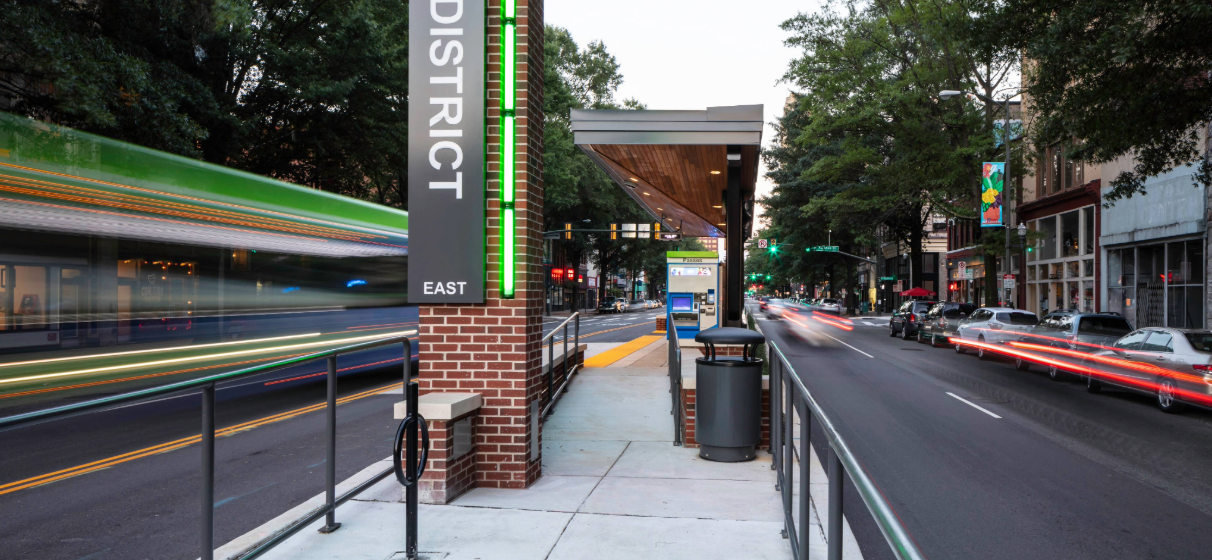With the Infrastructure Investment and Jobs (IIJA) Act set to expire in 2026, public agencies across the country are likely to turn to the Federal Transit Administration’s (FTA) Capital Investment Grants (CIG) program to fund major rail and bus rapid transit (BRT) initiatives.
Since its inception in 1987, the CIG program has been the federal government’s largest discretionary funding source: directing tens of billions of dollars to transit projects that reshape communities nationwide.
But navigating the program has become increasingly complex over the past three decades. Agencies can no longer simply apply: they need to build sophisticated strategies that anticipate policy shifts, competition for funding and long project development timelines.
To break down what this shifting landscape means for agencies planning future corridors, Sean Libberton, STV vice president and national transit corridor strategy and development leader, weighs in, drawing on more than 30 years of experience in federal transit planning and grants, to discuss how agencies can better position their projects for success under the CIG program.
1. For agencies on the fence about pursuing CIG funding, how would you describe the program’s challenges and benefits?
Unlike other federal grants, the CIG program is specifically designed to fund large-scale, long-term transit corridor projects. And project sponsors don’t simply wait for a Notice of Funding Opportunity (NOFO) and apply; applicants need to meet a set of extremely specific requirements across a multi-year, multi-step process involving project planning, viability and adherence to changing policies. It’s a rigorous process that can seem daunting.
STV’s team includes nationally recognized experts in transit travel demand modeling, capital cost estimation and risk management – key disciplines that inform how FTA views candidate CIG investments. We help our clients do more than navigate the process – we help them shape it. By starting early, investing in robust planning and project management, and understanding FTA requirements and policies, agencies can advance their project applications to be ready as soon as opportunity strikes.

2. Given your experience with this program’s evolution, how do you future-proof ongoing CIG applications so they remain compliant and competitive?
Our approach is rooted in anticipatory compliance and preparing beyond current criteria. We build conservative, defensible forecasts and cost estimates from day one, factoring in historical contingencies that experience has shown us may arise. Our team’s exacting review allows us to preemptively address gaps that would otherwise trigger rescoping and resubmission.
For example, we recently completed a comprehensive economic impact analysis that included travel time savings, job creation and tax revenue potential to strengthen the application in anticipation of shifting priorities we expect to shape future CIG submissions.
The CIG process is a marathon, not a sprint. Effective corridor planning is where that race begins, and where the right advisor can make all the difference. That includes an unbiased assessment of the challenges, needs and opportunities, comprehensive financial analysis and early stakeholder engagement.
3. Why is early stakeholder engagement so critical for successful submissions and projects?
A key determinant weighed during FTA’s evaluation is whether local land-use policies actively support the project with its current or planned zoning reforms, affordable housing provisions and development incentives.
Enacting supportive policy changes requires extensive agency and community coordination and sometimes takes years to implement. Agencies that delay engagement with local stakeholders risk submitting CIG applications without alignment between transit planning and local policy.
Our approach helps clients initiate these conversations early, so the application demonstrates viability not just through data but also through local partnerships. Ultimately, the result is a compelling response to the question, “How does this project deliver community value?”
This practice is embedded into our team’s strategy alongside our rigorous planning and risk assessments to position projects for both funding approval and long-term success.
Visit STV’s Infrastructure Economics and Grants Advisory page for more information about funding strategies for transit.








